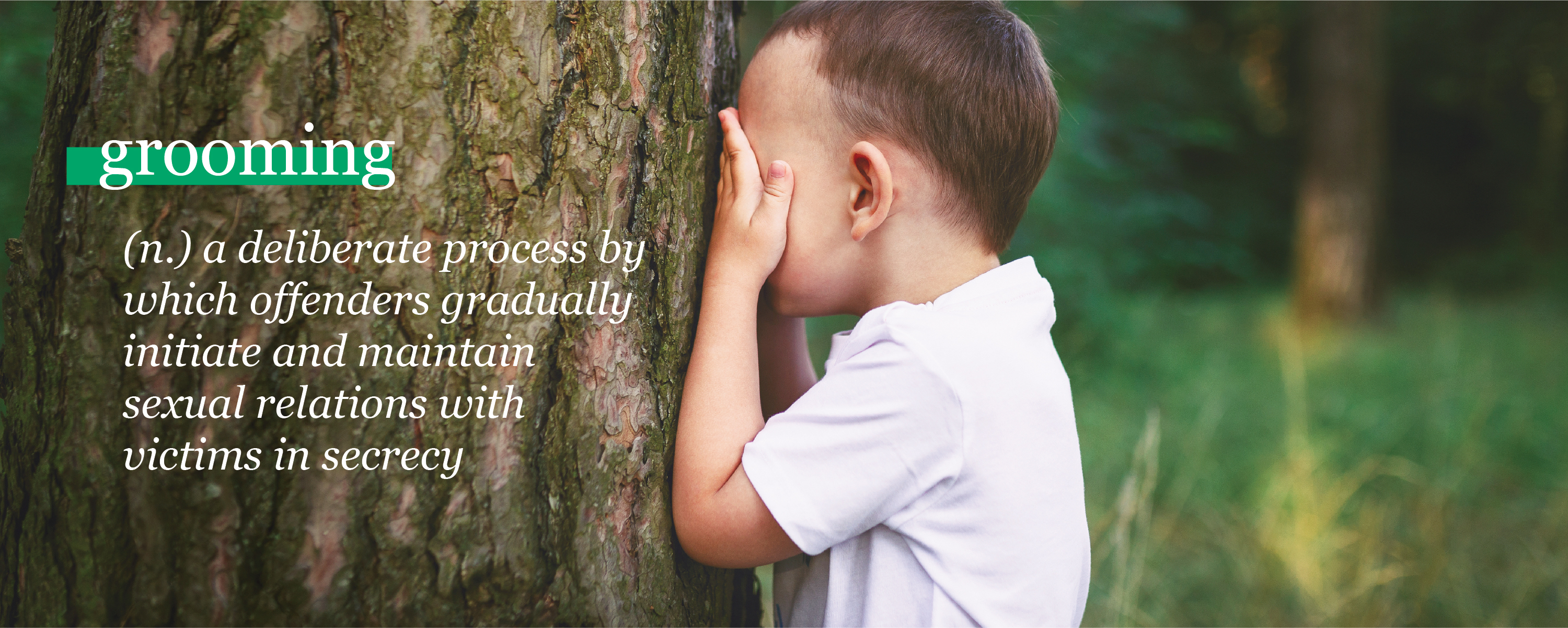Grooming is when someone builds a relationship, trust and emotional connection with a child or young person so they can manipulate, exploit and abuse them.
Children and young people who are groomed can be sexually abused, exploited or trafficked.
Grooming can take place over a short or long period of time – from weeks to years. Groomers may also build a relationship with the child’s family or friends to make them seem trustworthy or authoritative. Grooming can happen in person and on-line.
Grooming can take many forms, but it often follows a similar pattern:
-
Abusers observe possible victims and select them base on ease of access, proximity or a perceived vulnerability.
-
Abusers can gain trust to victim’s family to create a trustworthy relationship.
-
Abusers gain access and isolate victim by physically or emotionally separating the victim from others
-
Abusers gain trust with the potential victim through gifts, sharing secrets, or others ways to make them feel special or that they have a caring relationship
-
Abusers often start to touch the victim in ways that appear harmless such as hugging or tickling and later escalading to more sexual contact such as massages. Abusers may also show the victim pornography or discuss sexual topics to introduce the idea of sexual activity.
-
Abusers attempt to make the behavior seem natural to avoid suspicion.
Recognizing the tactics of grooming can be difficult for those being groomed. It is important for adults, parents and caregivers to understand what grooming is and the process groomers usually take to get close to their targeted victim.
Ways to protect your child from being groomed in person:
-
Teach children body safety boundaries so they know when they are in an inappropriate situation
-
Teach children they must never keep secrets, especially if the secret makes them feel sad, scared, or breaks your body safety rule
-
Help your children identify three trusted adults they can talk to if they feel uncomfortable
-
Teach your child to be assertive, that sometimes it is okay to say no to adults. Teach your child about consent and that no means no and they don’t have to explain it.
-
Pay attention to how other people interact or engage with your child, be cautious of how other people engage in physical interaction with your child, play with your child, or express interest
-
Be involved in your child’s interactions with others and know where your child is
If you suspect grooming is happening:
-
Look for patterns or behaviors in both the perpetrator and suspected targeted victim that would suggest grooming is occurring
-
Ask yourself if suspected perpetrator has gone out of their way to gain the trust of close family members and caregivers.
-
If you suspect your child is being groomed, immediately limit the child’s interactions with the individual
-
If you discover your child is being sexually victimized, contact law enforcement immediately
Ways to protect your child from being groomed online by:
Make sure your child is well-informed about the proper use of social networks and they feel comfortable talking to you if they feel unsafe or worried.
-
Teach children to keep personal information private, not to share school name, home address, phone number, etc. with people they don’t know
-
Spend time together looking at privacy settings and policies on internet browsers and social apps
-
Use and vet social/gaming apps or website yourself before allowing your child to use them
-
Talk to your child about how to be cautious with what they share with people online. Remind them that the “friends” they make online might not be who they say they are
-
Let your child know that it is never okay to arrange to meet with someone they know in person without a parent or caregiver present
Sources: rainn.org | internetmatters.org | boystown.org | chicagotribune.com | canr.msu.edu

